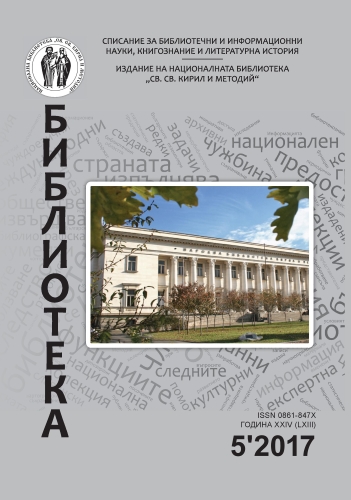Участието на читателя в развитието на арабския ръкопис
Reader’s roles in development of Arabic Manuscript
Author(s): Anka StoilovaSubject(s): Essay|Book Review |Scientific Life
Published by: Национална библиотека »Св. св. Кирил и Методий«
Keywords: Arabic Manuscripts; the reader as cocopyist; as proof-reader; as talib al-‘ilm; visible evidences for the reader’s presence; “small explanatory signs”; conjuring inscriptions;
Summary/Abstract: The paper is about presence of the reader and his roles, reflected in number of visible evidences left over in Arabic manuscripts. All empirical facts, discussed here, have being collected from codices dated between 14 th and 19 th centuries, stored at Sts Cyril and Methodius National Library.The first paragraph is on reader’s presence as it is seen in main manuscript texts, in colophon notes of copyists as well as in endowment attestations (waqfiya).The second paragraph is focused on the role of the reader as a proof-reader of manuscripts. The aim is to discus way the reader becomes co-copyist adding missing elements in handwritten texts.In the last paragraph the author gives a different point of view to the reader as talib al-‘ilm and plays attention to a special set of signs, named “small explanatory signs” by A. M. Barabanov. In contrast to the rest elements of Arabic alphabet and its additional marks for vocalization, these small explanatory signs do not refer sounds of the Arabic language.They are used to mark semantic relations between two or more words in one sentence or in the level of the paragraph. For this reason the small explanatory sign are defined as separate, specific and unique partof Arabic graphic.
Journal: Библиотека
- Issue Year: 2017
- Issue No: 5
- Page Range: 46-64
- Page Count: 19
- Language: Bulgarian

